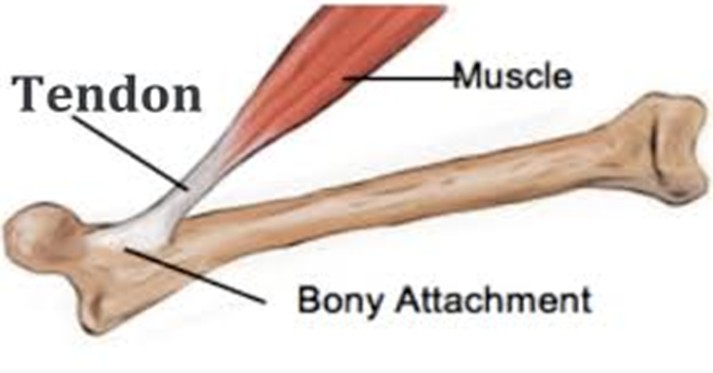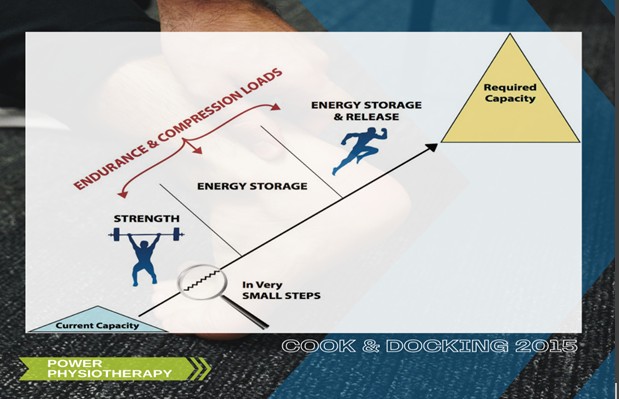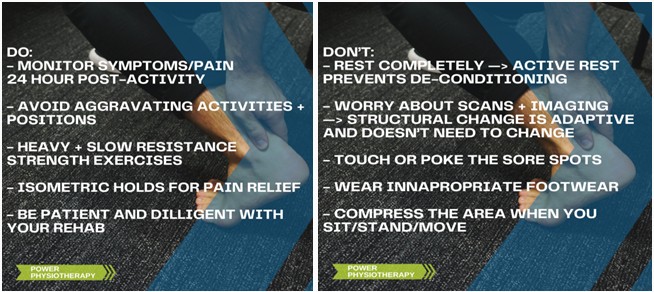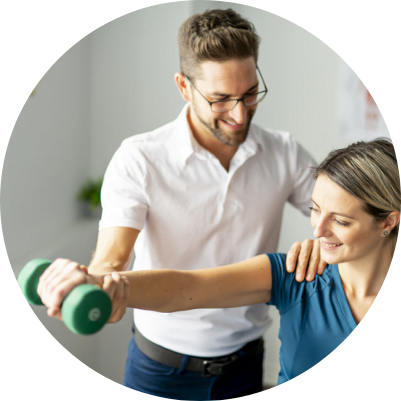The word ‘TENDONITIS’, gets thrown around a lot!
Often it’s the ‘go to’ diagnosis….if something hurts, let’s just call it ‘tendonitis’. However, is it really so?
It’s important to clarify one thing right at the start of this blog, (hoping not to confuse you!)…
TENDONITIS is the OLD word (though it still gets used).
TENDINOPATHY is the accurate, current word to describe a tendon problem. (we like keeping you up to date with current scientific literature).
Read on and let’s see if we can help put tendon pain into perspective for you. As we have emphasized in Part 1 and 2 of our pain series, understanding your condition is paramount for optimal rehabilitation.
Just a quick bit of anatomy for you:
What is a tendon?
Tendons are tough connective tissue structures that connect our muscles to our bones. They exist all throughout the body (we have thousands of tendons), but certain tendons tend to get more irritated than others, depending on our levels of physical activity, sports, age and gender.
What does a tendon do?
Tendons play an important role in helping us move our limbs. They also help prevent muscle injury by absorbing and distributing some of the impact your muscles take when you run, jump or do other movements or activities.
Of course we need a picture………

Definition of Tendonitis/Tendinopathy
Once upon a time, we believed that tendons were simply ‘inflammed’, so we called it Tendonitis.
Now we know through scientific research that this is not the full story. That’s why the name has been changed to Tendinopathy. (be aware that the term tendonitis is still being used today and that’s ok – we won’t stress too much about that).
So what is Tendinopathy: (this is tricky so get ready….)
It is a failed healing response in the tendon where the structure of the tendon changes making the tendon hold more water. This reduces the tendon’s ability to absorb and release loads during tasks and activities. In scans and imaging, water in the tendon may look like inflammation, however we now know that this is more of a structural change. However, in some cases there may still be an inflammatory component present, especially if the tendon is particularly aggravated!
In simple terms, the tendon can no longer do what it’s supposed to do, so it just gets irritated because it absorbs water, gets puffy and looks different.
Why do tendons get irritated?
Tendons get irritated when they get asked to do too much – above and beyond their capacity. eg: when we have never washed the windows and we decide to wash every window in the house (can result in shoulder tendinopathy)
OR.
when we have never gone for a run but decide that running hills for 5km is a great idea (can result in Achilles tendinopathy)
End result – very grumpy tendons!
So what do we do next? How do we treat tendons that are irritated & grumpy?
Do’s and Don’t for Tendon Care: What Tendons Love and Hate
Tendons HATE complete rest but LOVE relative rest.
This is really important:’ Complete Rest Is Detrimental to Tendon Capacity’!! Excessive rest from all activity will just result in muscular weakness and general deconditioning.
Relative rest is ideal: this means not all activities, exercise or sports are going to be ok to do if things are very painful. However we just need to modify and make things easier and less painful to do.
Tendons LOVE
Tendons LOVE some activity: they thrive on basic movement stimulation.
It’s important that we optimally load (or exercise) the muscle in such a way that it does not aggravate the tendon but we can still get things stronger.
Tendons HATE
Tendons HATE provocative loads: these are activities or tasks that really annoy your tendon. Typically if the tendon is aggravated and gets quickly stretched or squished/compressed this can make things worse!
So things like sitting with your legs crossed, stretching really hard to end range or lying on the sore bit. If the problematic tendon is in or near your foot, sometimes certain types of footwear can be provocative.
Once you have identified when this kind of loading happens we need to Modify, Modify, Modify!!
This means change the way you do things to minimise the aggravation to the tendon and therefore cause the least amount of pain. So, do activities in shorter bursts at home or work. Change things up at the gym with different weights, different reps, different ranges.
Tendons LOVE static holds
This means hold a position (such as standing on your toes) for up to 45 seconds, or hold a weight with your arms out to the side for the same amount of time. These can be great exercises for early rehab as the tendon doesn’t get overly squished or stretched (doesn’t get aggravated) while we can still build up the muscle!
Tendons LOVE heavy-slow-progressive-resistance
Tendons LOVE heavy-slow-progressive-resistance exercise programs, so YES to the gym and exercise. This is necessary to establish muscular capacity and strength. And over time, as the tendon calms down, we need to progress its ability to do its job…
Tendons LOVE acting like springs.
They store and release energy, so later stages of rehab must focus on exercises which improve capacity of the tendon to perform this role. This stage of rehab isn’t always relevant for each and every person and getting to this point depends on YOUR goals and the activities or sports you want to get back to!
We love giving you pictures so here’s a summary for you IN PICTURES!


Take Home Message!
Tendon problems (tendonitis – old term, tendinopathy – new term) are very tricky to treat on your own. This is definitely a condition that you need help and guidance with. Above are some summary DO’s and DONT’s for your rehab journey.
Be aware that tendinopathy issues can take a long time to get better. However the good news is that they DO GET BETTER, but you have to work through the process and be patient. In some cases tendinopathy issues can last months to years, especially if problems aren’t addressed soon enough…
The best thing that you can do is seek help ASAP.
The sooner you attend to your tendon problem, the faster it can be resolved.
The team at Power Physiotherapy is here to help so don’t hesitate to call
9440 6125 and make an appointment.



